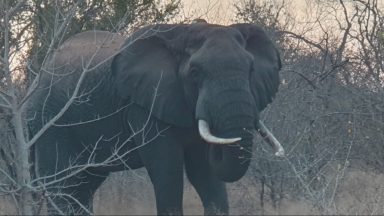As well as millions of hectares of land within the Peace Parks portfolio of transfrontier conservation areas, there are also vast wetlands, rivers, lakes, and coastal estuaries. These aquatic ecosystems are vital to wildlife. The Luangwa River in Zambia, for example, sustains 48 hippo per kilometer, the highest population of hippo anywhere in the world. The Olifants River in Mozambique sustains hundreds of crocodile that are washed downstream from the Massingir Dam each year. The country’s more southern shores provide important nesting sites for hundrends of endangered and critically endangered sea turtles every year.
The lives and habits of aquatic life is essential to and impacts the environment. Hippo, for example, transport large quantities of silicon from land to water via their faeces and this element is important to ecosystems. Sea turtles help to maintain healthy seagrass beds and coral reefs, providing key habitat for other marine life, helping to balance marine food webs and facilitating nutrient cycling from water to land.
To help conserve and sustain important populations of aquatic creatures, Peace Parks and partners assisted the establishment of the Ponta do Ouro Partial Marine Reserve, part of the first marine transfrontier conservation area in Africa. It contains vital breeding grounds for fish, turtles and marine mammals such as humpback whales, dugongs and dolphins.
Peace Parks acknowledges that aquatic food sourced from ocean and other large water such as lakes and rivers have an essential role to play in achieving food security, ending malnutrition and building healthy, nature-positive and resilient food systems. The challenge is to sustainably manage fisheries and safeguard the livelihoods they support, while protecting and restoring threatened and endangered species, habitats and ecological functions.
Demarcating no-go zones for community fishers is an initiative that is helping to develop more sustainable fishing practices along the coast and inland in Maputo Special Reserve. The aim is to establish boundaries for community fishing and therefore protect sanctuaries of fish populations. As fishing remains a vital for communities who fish for the pot as well as for their livelihoods, these no-take zones, agreed with communities and local government, allow local fish populations to recover.

